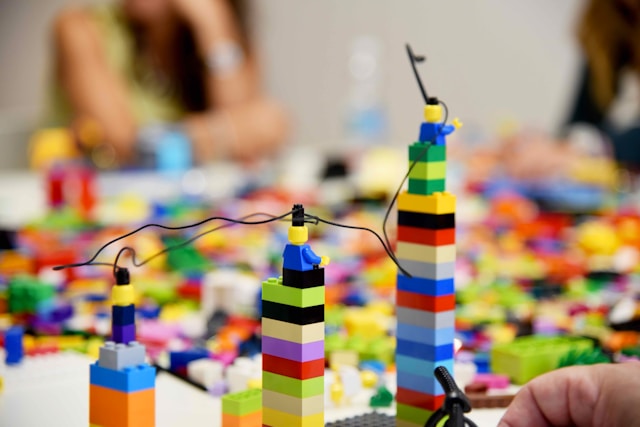Innovation is more likely when more people work on the task together.
I’ve mentioned elsewhere that working on your own is less fun, and that pairing with another person made it easier to find solutions too. Working on your own also means you’re probably being less innovative too.
Thierry de Pauw recently framed this approach around innovation. He pointed out that when people work on their own, then there is less-likely to be any innovation. Each person relies on themselves to find a solution to their task.
Innovation happens when you share ideas
It is only when you have two or more people working on a task together that collaboration, and maybe innovation happen. Two, or more people with one keyboard are talking about the issues raised by the task. They are writing and working on the parts at the same time. They are each bringing their own perspectives, and experiences to the work. They are also inspiring each other. You share ideas. Your ideas spark ideas with others. You build on each other’s ideas.
By putting more than one person on a task, or story, you create space for people to think. As they collaborate together they are able to pause and think while working together. They can watch the other person, or people, reflect on the work, and then add their perspective.
This is the moment when innovation and co-creation happen. This is where 1 + 1 = 3 (or more). Now the sum is greater than the parts.
Teach your people to collaborate with shared tasks
This happens when we collaborate. Teach your people to collaborate. This is less expensive than it appears.
You now have all of your best people on every task and story. There is less rework, and more output as work is pushed more frequently to production. Combine this with trunk-based development, and you’re off to a great start. This is what the DORA team propose too for high quality work.
This post is part of a project pulling together my materials and ideas about Teaching Team Collaboration: the Human-Side of Software Development for software development to students.
If you’d like to be notified of future posts, then please sign up for more using the adjacent form. When you sign up, then I’ll send you a free copy of the collaboration rules as a PDF from the book. You can also follow me on LinkedIn
The ideas above are from my book 101+ Ideas to Improve Team Collaboration, which covers all of these little things that students can do to improve their collaboration. Also available via Kindle.
